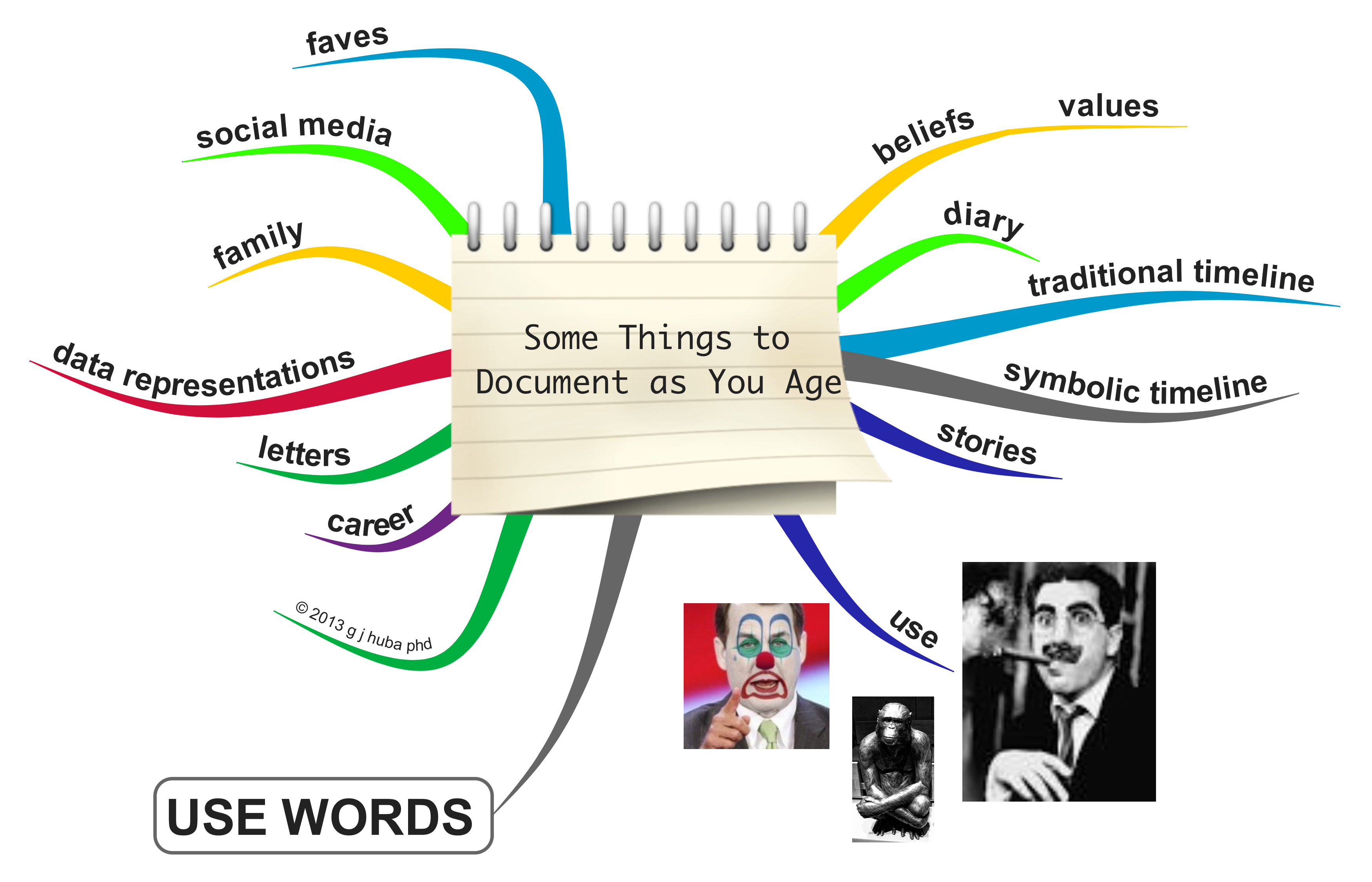Aaahh … “hard science double-blind” research designs.
How do you apply such a design to determine if visual thinking-art therapy-visual cognitive remapping strategies help those who live with cognitive impairment? Do you put a paper bag over the head of the patient and over the head of the healthcare provider-art therapist-social worker? Or blind them.
I don’t think so. Even scientists who bow to the Science God (often noting the relationship to Thor) are not that dum or stoopid. Scientists willing to accept “softer” data and designs like clinical observations, case studies, interviews, and knowledgeable peer judgments are willing to accept the relationship found for some people showing mind mapping is an effective (and cost-effective) way of making some situations less stressful and more productive and life quality enhancing for those living with cognitive impairment.
However, try searching the scientific literature with Google or PubMed for studies of mind mapping and cognitive impairment-dementia. Not a lot of “hard science” results to be found. I see this not as a failure of the efficacy of the method of mind mapping but rather the fact that the brick walls of hard science are not broken down by the sound of trumpets or the roar of a lion. There is a missing link and probably many studies that indirectly demonstrate that mind mapping works well with cognitively impaired patients but are not labeled as such.
Last week I read what I judge to be a highly credible and careful study by two neurologists and an art therapist that was published in April 2014. I think they found the missing link and data supporting it, although they did not call the intervention technique mind mapping for those with cognitive impairment. Instead they called the intervention-life skill to be ART THERAPY for those with Alzheimer’s disease and other dementias.
There is a LOT of literature showing that Art Therapy increases social interactions, understanding, motivation, enjoyment of life, associations, and perhaps memory among those living with dementia, and even for those in the latter stages of the disease.
What is Art Therapy? Applying color, form, creative ideas, social interactions (with a teacher and other participants) and positive psychological states to try to understand the world better and communicate the perceptions of the artist.
What is ORGANIC (Buzan-style) mind mapping? Applying color, forms, creative ideas, interactions, and positive psychological states PLUS radiant, hierarchical, and nonlinear organization to try to understand the world better and communicate the perceptions of the artist.
Is this conceptualization of mind mapping with and by the cognitively impaired as an enhanced formulation of ART THERAPY (conducted by a professional, family or friends, caregivers, the patient her- or himself) to help individuals use visual thinking strategies to navigate their world a break through one? I think it is the scientific missing link and we can bootstrap from the findings that Art Therapy is a good intervention for dementia to ORGANIC mind mapping may be a good intervention for dementia and perhaps will achieve a greater effect than less focused “art.”
Here is a link to the paper. Click on it to retrieve the article.
As a technical note, the authors’ use of meta-analysis to combine the results from a number of independent studies selected for their methodological soundness is an accepted one which has become popular in the past three decades.
I want to see much more research on this topic. BUT, I think that we are currently moving in the correct direction in a “leap frog” way with great speed.
Keep both eyes open and click on the image below to expand it.
When you are done, part 2 can be accessed in a new window by clicking here.








